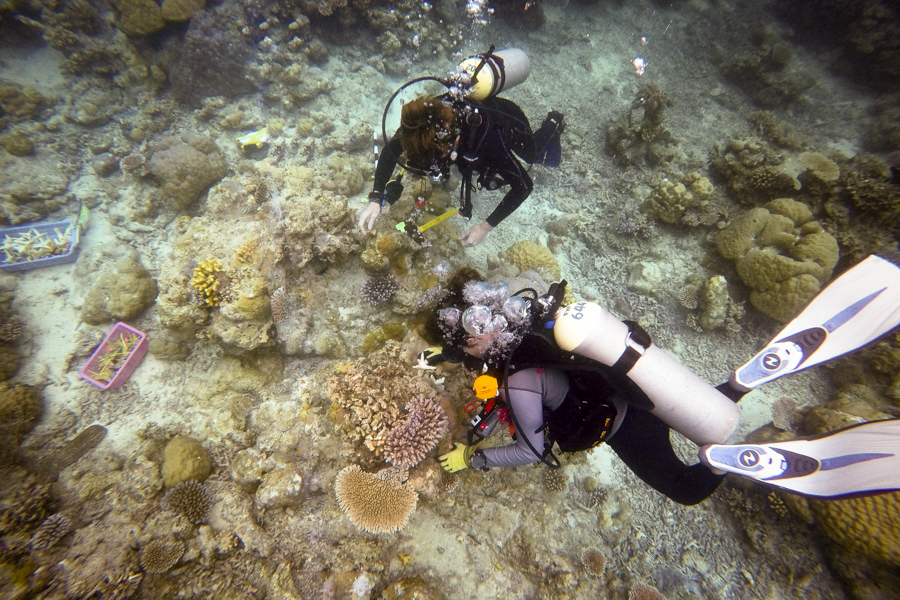MCRI Research Archive
Below are the research projects (in PDF form where available) that the Aquarium of the Pacific has been involved in since the inception of MCRI.


UC Davis/Sea Grant – Marine Debris Study (Derelict Gear Pilot Project) (2005)
Aquarium scientific divers-in-training participated in part of a statewide study managed by University of California, Davis/Sea Grant and funded by the National Oceanic and Atmospheric Administration and the Coastal Conservancy to locate and identify abandoned marine debris in the waters surrounding Catalina Island.

Tracking the Brown Sea Hare (Aplysia californica) in the Southern California Bight (2005)
Volunteer scientific divers from the Aquarium of the Pacific assisted California State University, Fullerton PhD. candidate Mike Navarro with his studies aimed at understanding how larvae of many species disperse in ocean currents.

Cal State Fullerton – Larval Mollusc Movement Study (2005)
Scientific divers from the Aquarium of the Pacific assisted graduate students from California State University, Fullerton by collecting larval sea hares and various other mollusks. Deciphering the connectivity of marine populations involves tracking larval sources and settlement sites.

Leopard Shark Thermal Inertia Study (2005)
In 2005 the Aquarium’s animal husbandry department assisted California State University, Long Beach graduate student Barbara Zeigler in conducting research on leopard shark thermoregulation. Several of the Aquarium’s sharks were fed a small temperature logger then held in tanks containing water of varying temperatures. The purpose of this study was to determine the thermal inertia of leopard sharks (i.e.: How long can they maintain their body temperature in varied temperature environments?)

Sea Turtle Necropsy Workshop (2004)
Dr. Lance Adams and officials from the National Oceanic and Atmospheric Administration National Marine Fisheries Service conducted a two-day workshop which consisted of classroom lectures and hands-on practicals, aimed at instructing veterinarians and stranding center managers in the proper methods of conducting necropsies and preserving tissue samples from dead sea turtles.

A Retrospective Study of the Diseases of Sea Dragons (2004)
The Aquarium of the Pacific submitted more than forty-five samples that were used in this study. This is the groundwork for understanding the captive health management of this rare species and may have important conservation impacts. Thirty-four diseases of weedy sea dragons and twenty-eight diseases of leafy sea dragons were described.

North American Captive Harbor Seal Phocid Distemper Virus Survey (2004)
Phocid distemper virus (PDV) is an important disease of free-ranging marine mammals and a potential health concern for introduction into captive phocid collections. Prior to this study, no comprehensive serosurvey of the 129 captive harbor seals in North America for this virus had been performed. The Aquarium submitted serum samples from its three harbor seals to support this project.

Sandtiger Scoliosis Project (2004)
Aquarium of the Americas’ tissue samples from two clinically affected sand tiger sharks, one from the Aquarium, were analyzed. The presence of a previously unidentified pigment crystal was identified in all the shark samples.

Clinical Research Using a Neonicitenoid (Capstar, Nitenpyram)
Current treatment for this Lernea sp. parasite (arthropod) requires the use of toxic materials that are hazardous to the environment, staff, and to sensitive animals in aquariums.

Clinical Research Using Regranex to Treat Head and Lateral Line Erosionsin Marine Fish (2004)
The purpose of this study was to develop a more practical and cost-effective protocol for the treatment of HLLE in fish using Regranex.

